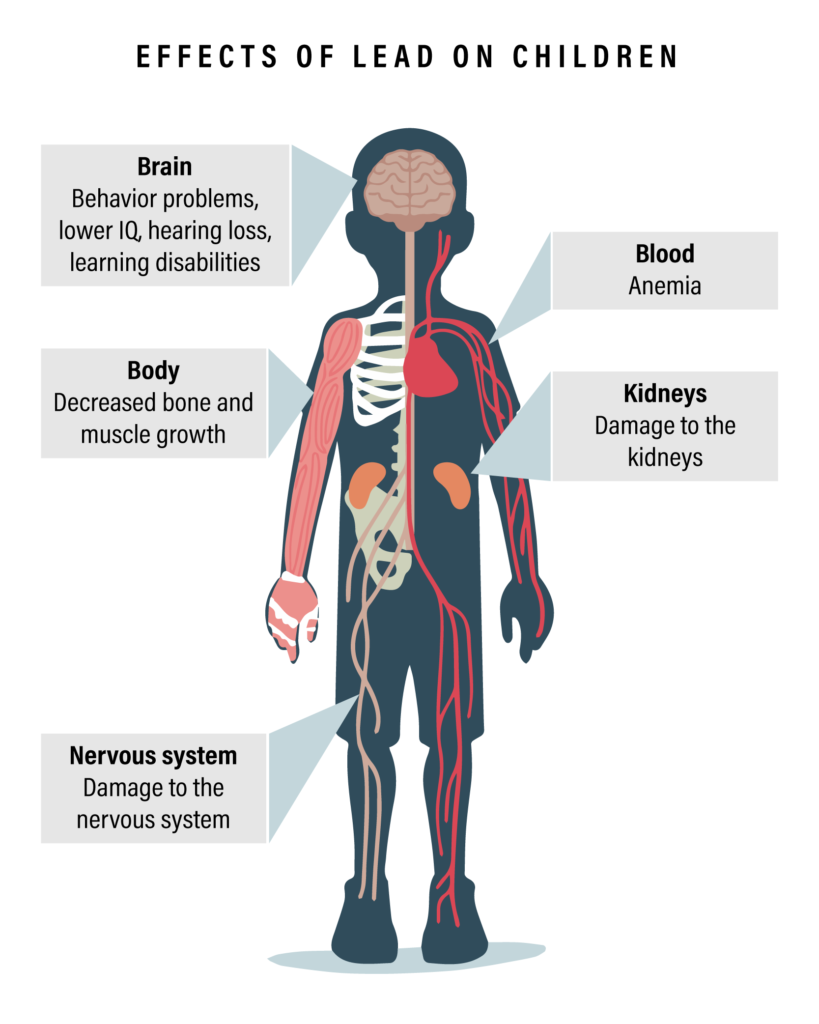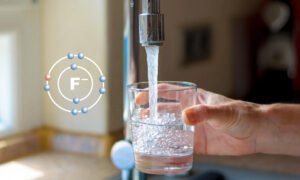Understanding the Health Effects of Lead in Drinking Water
Lead contamination in drinking water poses significant health risks to individuals of all age groups. This article explores the dangers of lead exposure, practical steps to minimize the risks, and how proactive water testing can safeguard your health.
What is Lead and How Does it Enter Water Systems?
Lead is a toxic heavy metal that can leach into water through aging pipes, corroded plumbing, or lead-based solder. Homes with older plumbing are particularly vulnerable to lead contamination, making regular water testing essential.
The Health Effects of Lead: A Comprehensive Look
The Impact of Lead on Human Health
Using “lead exposure effects”, “lead toxicity symptoms,” and “health risks of lead in water” as focus keywords, here’s a deeper exploration of how lead affects the body:
- Effects on Children (“lead poisoning in children,” “lead impact on IQ”):
- Neurological Damage: Exposure to lead can cause reduced IQ, shortened attention spans, and behavioral disorders.
- Developmental Delays: Lead interferes with brain development, causing long-term cognitive impairments.
- Learning Disabilities: Children exposed to lead often struggle with learning, memory, and problem-solving.
- Effects on Pregnant Women (“lead and pregnancy,” “fetal health risks”):
- Risks to Fetal Development: Lead crosses the placenta, increasing the risk of preterm birth, low birth weight, and developmental defects in the baby.
- Maternal Health Issues: Pregnant women may experience elevated blood pressure, which can lead to complications.
- Effects on Adults (“lead exposure in adults,” “health effects of lead in water”):
- Cardiovascular Problems: Lead exposure is linked to high blood pressure and increased risk of heart disease.
- Kidney Damage: The kidneys filter toxins, but lead can damage this filtration process, leading to chronic kidney disease.
- Nervous System Impairment: Prolonged exposure can result in memory loss, mood disorders, and reduced motor skills.
- Impact on Vulnerable Populations (“lead poisoning risks,” “elderly and lead exposure”):
- Elderly individuals are at risk of accelerated cognitive decline and bone damage due to the release of stored lead from bones into the bloodstream.
Long-Term Risks of Lead Poisoning
Chronic lead exposure doesn’t just cause immediate symptoms; it has long-lasting health implications:
- Cognitive Decline (“long-term lead exposure effects”): Impacts on memory and intelligence persist throughout life.
- Bone Health Issues: Lead is stored in bones, which can leach into the bloodstream over time, particularly during aging, pregnancy, or illness.
- Increased Cancer Risk (“lead and cancer risk”): Studies suggest that lead exposure is associated with an increased risk of certain cancers.

Steps to Reduce Lead Exposure
- Flush Your Taps: Run your tap for at least 1-2 minutes before use if the water has been sitting for several hours.
- Use Cold Water for Cooking: Hot water is more likely to contain higher levels of lead.
- Install Certified Filters: Use filters certified to remove lead effectively.
- Replace Lead Plumbing Fixtures: Identify and replace pipes and faucets containing lead.
- Regularly Clean Faucet Aerators: This helps remove trapped lead particles.
For more tips, visit the EPA’s Learn About Lead page.
The Role of Water Testing in Ensuring Safety
Ohio Water Testing offers comprehensive chemical testing that identifies lead and other contaminants in your water. Through techniques such as titration and direct measurement, we test for:
- pH levels
- Iron and sulfite levels
- Hardness and alkalinity
Visit our Contact Page or call us at (440) 296-3222 to schedule a water safety assessment today.
How Can Ohio Water Testing Help?
Ohio Water Testing provides comprehensive chemical testing to detect lead and other contaminants in water. Using advanced techniques like titration and direct measurement, we test for pH levels, hardness, alkalinity, and sulfite—ensuring your water is safe to consume.
📞 Call us at (440) 296-3222 or visit our Contact Page to schedule a water quality test.
FAQ
Q1: How does lead enter drinking water?
Lead enters water systems through corroded pipes, lead-based plumbing fixtures, and aging infrastructure.
Q2: How can I know if my water contains lead?
The best way to identify lead contamination is through comprehensive water testing. Ohio Water Testing offers reliable services to detect lead in your water.
Q3: Is boiling water effective in removing lead?
No, boiling water does not remove lead. It may even concentrate lead levels due to evaporation.
Q4: Can lead affect appliances?
Yes, lead can cause buildup in appliances, reducing their efficiency and lifespan.
Q5: How often should I test my water for lead?
Testing should be conducted annually, especially in older homes or areas with aging plumbing systems.





